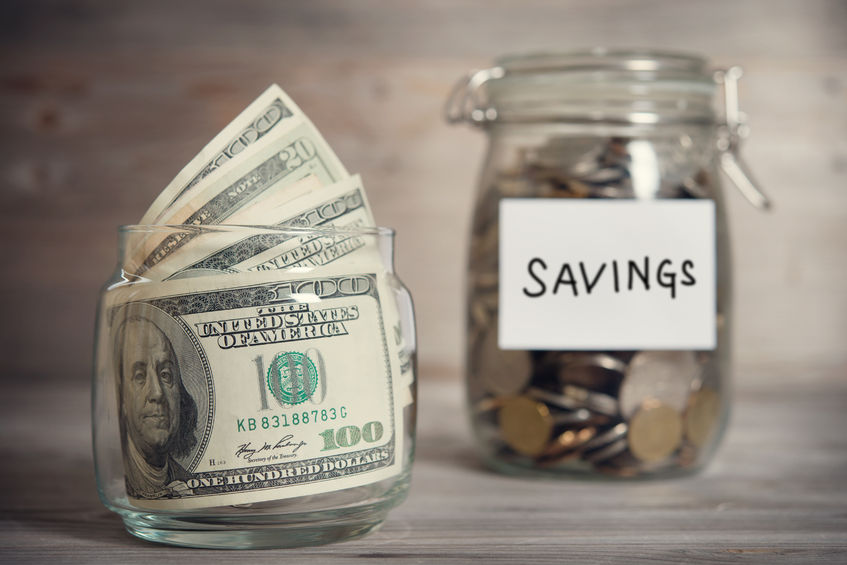
What is an emergency fund?
An emergency fund is a readily available source of cash or assets set aside to help you navigate financial dilemmas, like debilitating illness, the loss of a job, a major home or car repair, or even a national crisis like we experienced with the COVID-19 pandemic.
Emergency savings can be used to cover both small or large unplanned payments that aren’t part of your routine monthly expenses.
How large should it be?
Financial planners recommend that your emergency fund should cover at least three months’ worth of expenses and ideally six months. Therefore, calculate all your expenses for the month, including rent, student loan payment, mortgage payment, groceries, auto payment, and more. Then multiply the sum of those expenses by three months – that’s the minimum that should be for in your emergency fund.
For example, if a couple spends about $5,000 a month, then they need at least $15,000 in their emergency fund or $30,000 in an ideal scenario.
How to start an emergency fund
Unfortunately, you cannot open a special ‘emergency’ account at your bank. It takes discipline on your part to open an account and designate it as your emergency account.
For starters, opening two savings account – one for short-term emergencies and the other for long-term – is a great idea. Your short-term emergency fund will cover things like a car repair or replacing a refrigerator while the long-term emergency fund will cover things like unemployment or unexpected medical bills.
When opening an account, look for one with a high annual percentage yield (APY). About 2% should be your target. For instance, if you save $10,000 in your emergency account, you earn $200 at the end of the year with a 2% APY.
Tips for building an emergency fund
It’s not enough to open the accounts. You also have to fill it up with the amount you need and ensure you do not spend it on non-emergencies. Here are some tips to help with that:
- Save, save, save!
You have to develop the habit of saving to rack up the amount you need. While it’s preferable to save more so you can meet your target, what’s more important is that you’re consistent. Even if you’re paying off credit cards or other debts, fight the urge to put a pause on saving.
By being consistent with your saving, you not only meet your target on time, but you also develop a saving habit that will transform your financial life.
- Create a budget and stick with it!
You’ve probably heard this advice a million times. Yet, according to the U.S. Bank, only 41% of American households follow a budget! By creating a budget, you’ll easily see where you’re overspending and cut back as necessary. Also, you can more easily resist the urge to spend on things you don’t need. This, in turn, helps you to have more money left, which you can save.
- Automate the process
The best way to save into your emergency fund is to make it automatic. If you receive a direct deposit of your paychecks, see if you have a certain percentage directly deposited in your emergency account. If not, set up an automatic transfer to immediately transfer a certain fraction of your gross income into your emergency account.
The idea is to move the money to your emergency fund before you even notice it’s there so that you won’t be tempted to spend it or even forget to transfer it.
- Emergency funds are only for emergencies!
You should never take from your emergency fund when it’s not for an emergency! Doing so defeats the reason for having an emergency account in the first place.
A good strategy is to make your emergency easily accessible, but not too convenient to access. For instance, you might open your emergency account at a credit union that doesn’t have a branch close to you. Similarly, you shouldn’t be able to make simple online transfers with your emergency account. This will help you fight the urge to wastefully spend your emergency fund.
As a note of caution, you shouldn’t also lock down your emergency fund in a 5-year CD or other fixed accounts. Your emergency fund has to be easily accessible so you can use it when an emergency arises.
- Keep Saving
Even after you’ve saved the recommended amount into your emergency fund, keep saving! To keep you motivated, set new saving goals – maybe it’s saving for a family vacation, a new car, or even a down payment for a home or a college fund for your kids.
When you live within your means, and you develop a strong saving habit, your financial life will be healthier.
Contact us today for more information.

